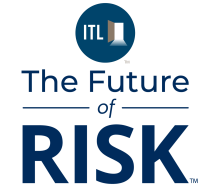Observability transforms investments from opaque expenses into measurable value drivers in the enterprise. Beyond monitoring, it provides transparency into system behavior and business impact. Leaders who implement comprehensive observability across data, models, LLMs and agents gain competitive advantage through improved outcomes and demonstrable ROI.
In today's dynamic business environment, organizations are making unprecedented investments in data, AI and machine learning capabilities. Yet leaders face a common challenge – What is the business value of my data and AI investments? How do I measure its impact and ROI?
This scenario plays out repeatedly across many organizations. It is not just about implementing technology, but creating transparency and mechanisms for measuring impact and ensuring systems are perpetually adaptable to changing business needs. This is where observability comes into play.
What Is Observability, and Why Is It Important?
Observability isn't just about monitoring technical performance – it's about creating a direct line of sight between data and AI investments and business outcomes. This transparency is crucial for building trust and demonstrating value. While monitoring tells you when something is not working, observability helps you understand why it broke and how to fix it.
Key components of observability are:
- Data Observability – It focuses on data quality, lineage and metadata management. This includes monitoring data freshness, schema changes, distribution shifts, etc. that affect business. For instance, augmented data quality empowers organizations to prevent data quality problems at the point of ingestion (reducing data down time). It takes data quality to the next level by helping organizations understand data health and performance. Tools in this space include Acceldata, Monte Carlo, and Datadog.
- Model Observability – It tracks model performance metrics, drift patterns and explainability factors. This ensures AI models maintain accuracy and reliability over time, while providing explanations for decisions. Tools in this space include WhyLabs and Arize AI.
- LLM Observability – It tracks prompt effectiveness, response quality, hallucination rates and token usage of large language models. This is critical for managing both performance and costs. Tools in this space include LangSmith and helicone.
- Agent Observability – It extends observability to autonomous AI agents, monitoring their decision-making processes, actions taken and overall effectiveness in completing complex tasks with minimal human intervention. Tools in this space include LangSmith, helicone and AgentOps.ai.
- Infrastructure Observability – It ensures that the technical foundation supports data and that AI systems remain resilient, scalable and cost-effective. Tools in this space include Datadog, New Relic and Dynatrace.
Applications in Insurance and Healthcare
Organizations driving business outcomes aligned to changing customer needs map observability metrics to specific value streams. Below are some of the uses in insurance and healthcare.
Claims – It is a critical function in insurance value chain and has direct bearing on customer experience, operational efficiency and regulatory compliance. It provides the ability to track intake (first notice of loss, or FNOL) accuracy (structured vs unstructured data), natural language processing (NLP) sentiment analysis confidence scores on customer interactions, model confidence scores such as fraud and subrogation across claim categories, along with explainability for decision making and its overall impact in operations. This specifically tracks how NLP confidence scores correlate with customer satisfaction metrics, allowing for continuous refinement. Insurers with mature observability at the FNOL stage, will see an overall reduction in claim cycle time.
Underwriting – Consider a scenario where a broker renews or adds commercial properties to a portfolio and looks for a competitive quote from an underwriter. As part of the process, large sets of information (e.g.: schedule of values) get exchanged and risk assessment is carried out to understand the property characteristics and its exposure to CAT risks, to determine the risk profile, and to arrive at premium. If there is a change or anomaly in property characteristics such as roof condition via roof confidence score, mis-classification due to difference in primary modifiers such as ISO construction class, etc., observability will enable tracking the data drifts in risk factors, CAT model accuracy/performance characteristics etc. that affect the underwriting decision and improve overall broker and underwriting experience.
Clinical Diagnostics/Decision – AI agents alleviate the complexity of this data-intensive process by leveraging LLMs to extract context-specific clinical entities from medical records, summarizing medical conditions, invoking tools such as recommendation engines/agents for treatment options based on patients' medical history and guidelines, etc. In the absence of observability, there will be limited visibility on whether models are hallucinating or adhering to the clinical guidelines, on accuracy or consistency, on the rationale for recommended treatment plans. Overall, AI intervention without observability may become a liability. Hence, observability becomes a cornerstone to transform clinical decisions and improve patient outcomes while saving physician time.
The Way forward
For a chief data and analytics officer, chief data officer or business executive, the business case for comprehensive observability has never been clearer. Below are some best practices and next steps, as leaders are envisioning how to leverage the technology to transform their business.
- Ensure your D&A strategy encompasses an audit of your current observability maturity across data, models and infrastructure. Most organizations discover significant gaps that create business risks and limit benefits. Align your observability investments directly to business outcomes rather than technical metrics alone.
- Build observability into your data architecture from the beginning, rather than retrofitting later. This approach typically reduces implementation costs and builds trust with business.
- Develop an observability-driven culture. That enables teams to leverage insights and helps to address issues at the onset, before affecting business operations. This fundamental shift transforms data teams to value drivers.
- Don't make a one-time investment. Develop a continuing capability that adapts along with your data, AI and business initiatives.
In a nutshell, organizations gaining competitive advantage aren't those with huge AI investments but the ones with visibility into how their data and AI systems create business value. By implementing comprehensive observability, you transform data and AI investments into measurable, adaptable capability for sustainable innovation.








